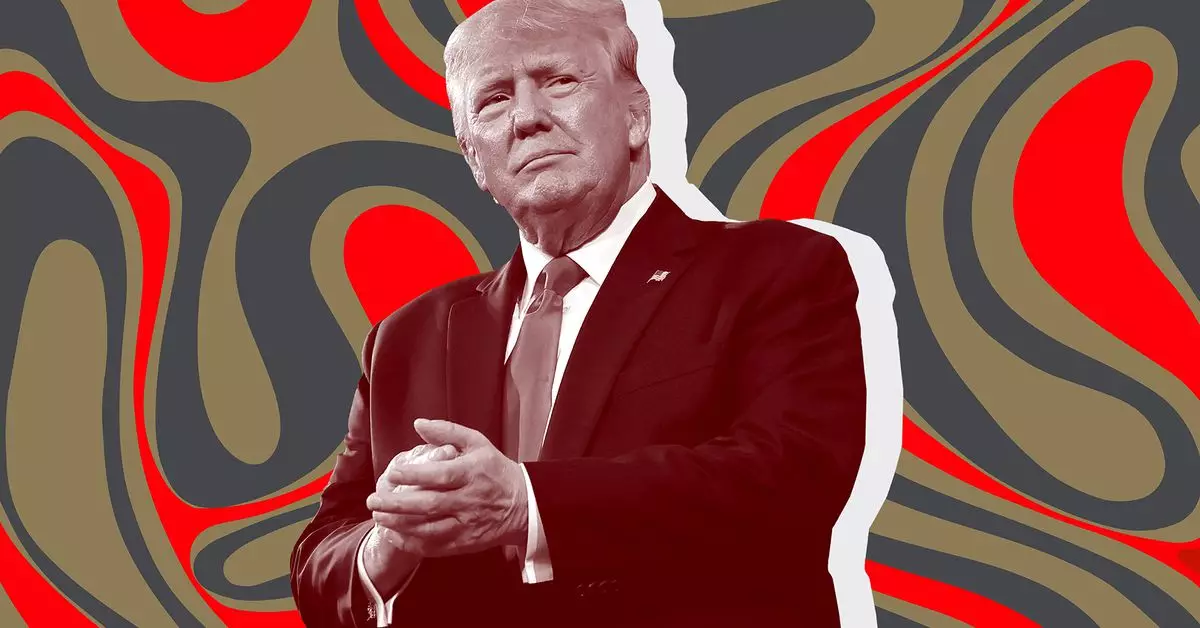In a move that sent ripples across the financial and political landscapes, World Liberty Financial, a cryptocurrency initiative backed by former President Donald Trump, launched its highly anticipated token sale. The project, which promises to bridge the gap for unbanked and de-banked individuals, encountered immediate technical issues; its website crashed shortly after the launch, prompting widespread discussions about the viability and preparedness of this new venture. As the crypto world watches closely, the implications of this project warrant a careful evaluation.
Prior to the launch, anticipation built as World Liberty Financial opened its whitelist for prospective buyers, purportedly attracting over 100,000 interested investors. Co-founder Zach Folkman revealed this staggering interest, emphasizing that the level of enthusiasm surpassed the team’s expectations. This surge in interest is not merely a passing trend but indicative of a larger narrative at play: the intersection of politics and cryptocurrency. The former President’s personal brand has traditionally been a divisive element; hence, the true test will be whether this venture can resonate beyond his core supporters to attract a more diverse investment base.
Nevertheless, amidst the buzz, the launch was marred by significant technical failures. Sandy Peng, an advisor for WLFI, attributed the website’s crash to an overwhelming influx of traffic, noting that it garnered an astonishing 72 million unique visits within the first hour. Such bottlenecks in the digital landscape are not uncommon in cryptocurrency launches, yet they raise questions about the strategic planning and technical infrastructure that underpin these ambitious projects. Investors are not simply purchasing a token; they are betting on a platform’s reliability and sustainability.
It is essential to analyze how these technical setbacks might affect investor confidence moving forward. Investors entering the cryptocurrency space are typically aware of the risks; however, the inability to access a platform upon a major launch could deter future interest and breed skepticism about its functionality.
As of the latest reports, only a small fraction of interested parties—5,317 unique wallet addresses—actually acquired tokens, which raises a pivotal point about the distribution strategy. World Liberty Financial announced that out of the 20 billion tokens available for sale, it sold over 532 million. However, the early-stage limitations placed on WLFI, including its non-transferrable status, could hinder its liquidity and attractiveness, raising concerns about its long-term viability as a governance token.
Holders of WLFI will purportedly enjoy governance rights over the platform—an appealing feature in decentralized finance (DeFi). However, the terms delineated by the company include limitations that may alienate the very demographic it claims to serve, particularly when valid purchasing opportunities are restricted to accredited investors, defined by stringent SEC criteria. Critics point out that such constraints contradict the overarching goal of democratizing finance, suggesting an inherent hypocrisy within the project framework.
Trump’s foray into cryptocurrency through World Liberty Financial is a double-edged sword. While his involvement attracts attention, it also invites scrutiny. The marketing strategy leans heavily on his reputation, with Trump being labeled the “chief crypto associate” alongside his sons who are promoted as Web3 ambassadors. This family-centric branding can either galvanize the loyal base or provoke skepticism among the broader public, thus creating a controversial narrative that is tough to navigate.
Furthermore, the project has to contend with a degree of distrust that often shadows political figures dabbling in financial realms. The potential for regulatory backlash could be significant given the SEC’s current climate concerning cryptocurrencies, raising questions about the project’s compliance and its implications for investors.
As the crypto community casts its gaze upon the aftermath of the WLFI token sale, several takeaways emerge. While the initial interest is promising, the reality of operational execution will ultimately define the project’s trajectory. The implications of both technical failures and the regulatory landscape loom large over the future of World Liberty Financial. What remains to be seen is whether the initial influx of interest will sustain, or if the project will fade into the background amidst more robust competitors in the evolving crypto space. As with any cryptocurrency venture, the coming months will be crucial in determining its fate in a highly volatile market.


Leave a Reply